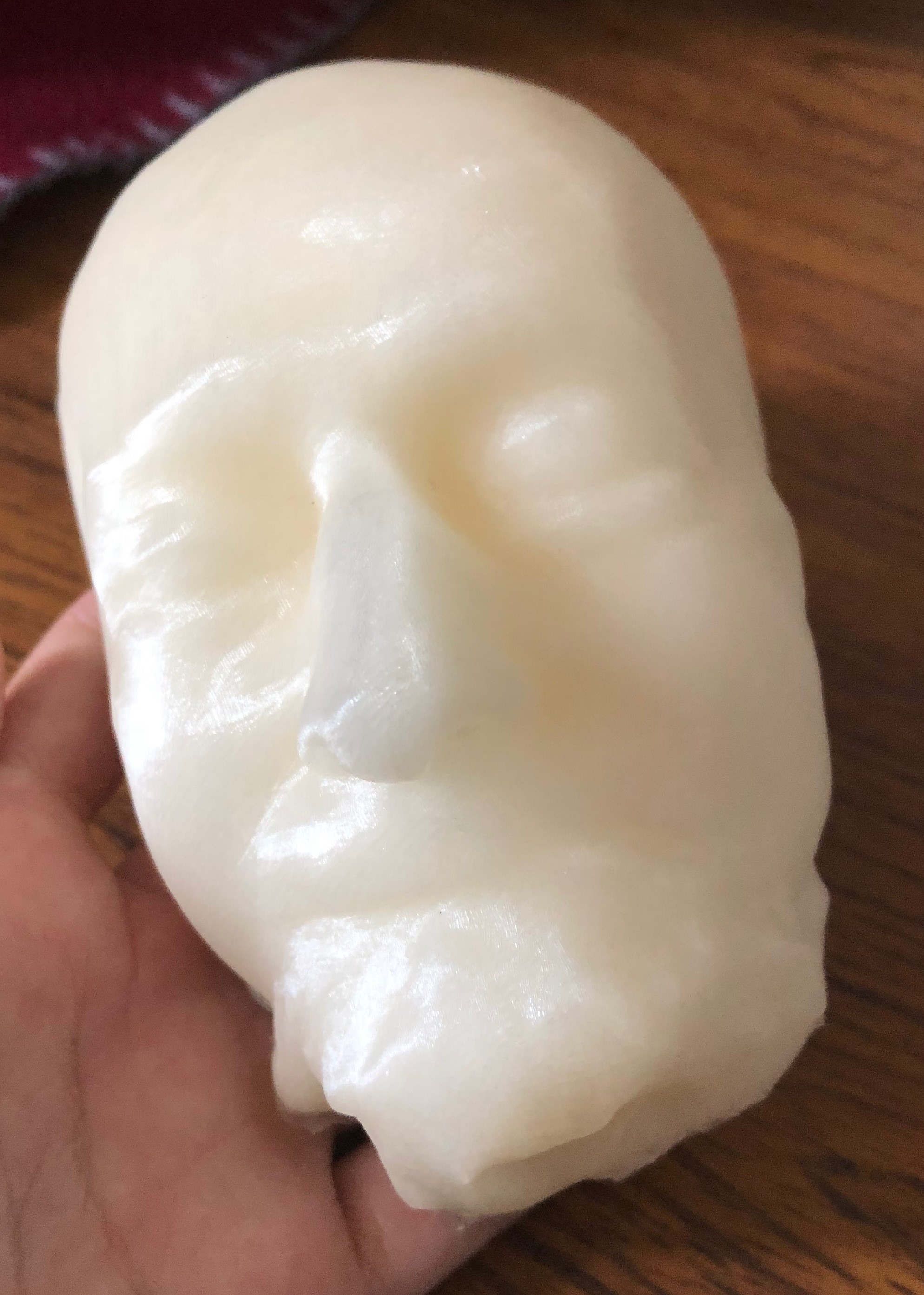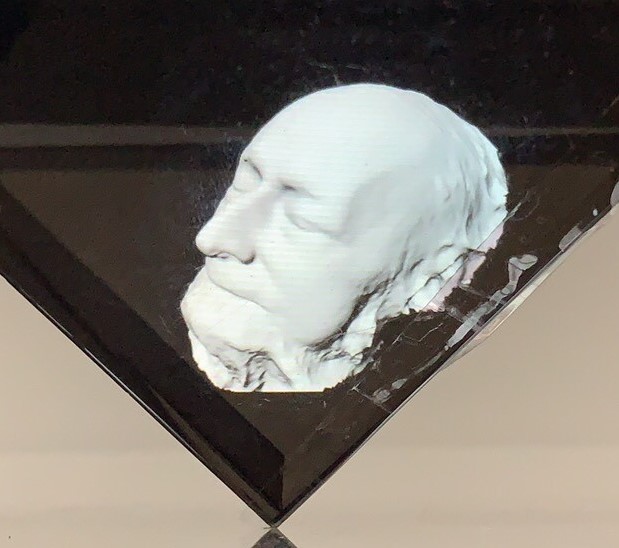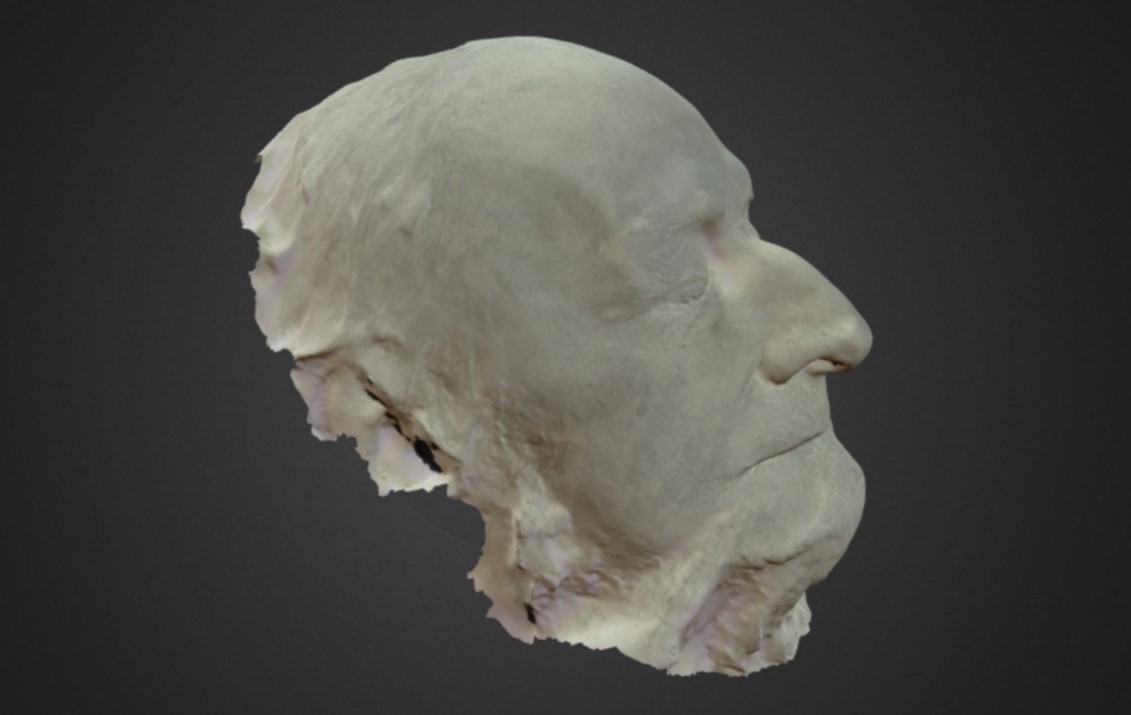Meng Hao learns about the way we interact with historical objects, and how this interaction can be extended and enriched through digital replicas.
My MSc thesis aims to explore authenticity as experienced by visitors to museums, and to assess the impact of modern digitisation technologies as used in the museums and heritage sector.

Sir Isaac Pitman (1813-1895) invented a phonetic system of shorthand in 1837. The Pitman Collection, held in the University’s Archives & Research Collections, includes Sir Isaac Pitman’s death mask. I chose the death mask for my study as a representation of physical museum exhibits and because it is unique, extremely fragile and of significant historic interest. To assist my research I made three replicas of the death mask; a 3D model, a 3D printing and a 3D hologram. Then I randomly recruited 28 volunteer participants and showed them the three replicas and the real death mask in random order. I let them interact with the four versions of death mask one by one. Each participant then completed a questionnaire about their engagement, and finally I interviewed them about their feelings and responses to the death mask and its replicas.

It was interesting to note that most participants tended to differentiate between the original death mask and the 3D-printed replica as physical objects, and the 3D model (shown on a tablet) and the hologram as virtual objects. Surprisingly, the real death mask was not favoured by most participants. Because of its delicacy, it is housed in a wooden box and participants could only view it from one side. All the participants mentioned that they would have liked to have been able to see the real death mask from all angles. They felt that they could more easily engage with the life and achievements of Sir Isaac Pitman through the original object than through the copies. They also thought that the real death mask seemed precious and was more closely connected to the reason they visit museums. Three participants even expressed fear of the real death mask.
Yet the three replicas also have their advantages. The hologram was the most popular, as it was perceived to be clear and fresh to participants. The 3D model was found to be easiest to use, and the 3D-printed version was the only replica that was touchable. Some participants also said that it would be better in museums if they could see and admire the real object first, and then play with the 3D-printed objects.
The findings of the experiment broadly indicated that people place a higher value on the overall quality of the visitor experience, than on the perceived authenticity of the exhibits. Modern technologies have the potential to help museums attract more visitors by allowing people to engage with and experience historical objects in a range of new and different ways.
